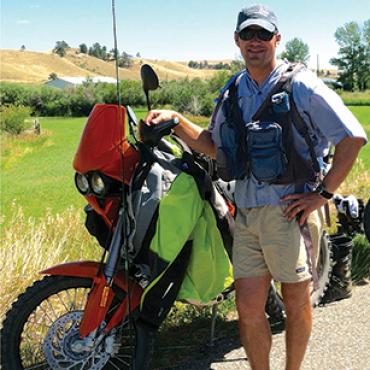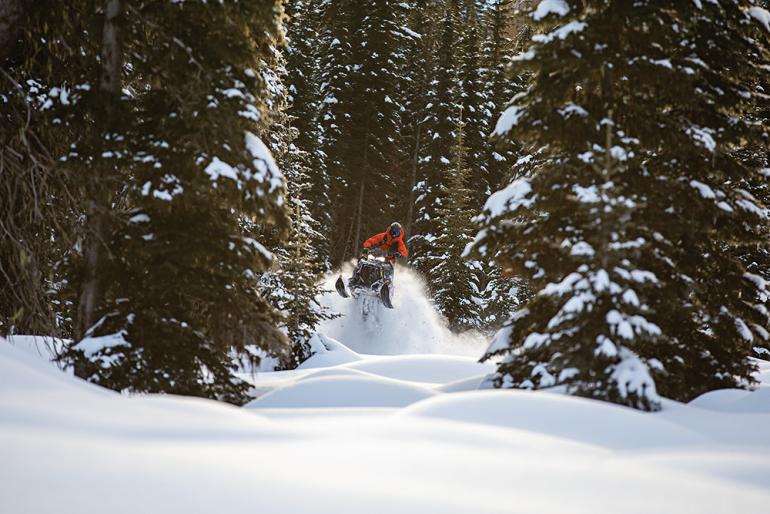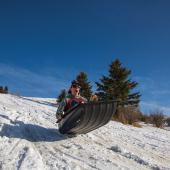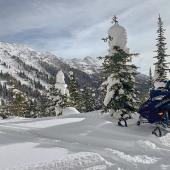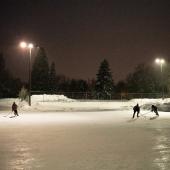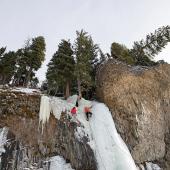Revving It Up
Snowmobiles surge in the Bozeman backcountry.
The last few decades in Bozeman have seen some big changes, not least of which is an increased population. There are more people living in the valley and every winter, many of them seek the same basic experience: blissful movements in untracked powder. Although newly crowded areas can be frustrating, one must stay positive and keep looking for new stashes. With crowded trailheads, tracked-out slopes, and sidecountry access from the ski areas, I needed a way to find solitude in the backcountry. So I bought a snowmobile.
Many of us have gone down this path. What better way than a sled to escape the ever-increasing skinners, snowshoers, and kick-and-gliders? You can go farther and faster, leaving the human-powered hordes behind. Not to mention that sleds are damn fun to ride in their own right. Put the two together and you have a recipe for increasing numbers of snowmobilers in the backcountry.
Will this surging popularity change anything out there in the winter woods? Generally, increased activity leads to increased conflict… is that the case here, especially as more skiers are using snowmobiles to access remote terrain? To dig into it, I talked with four different backcountry hobbyists about their perspectives on snowmobiling around Bozeman.
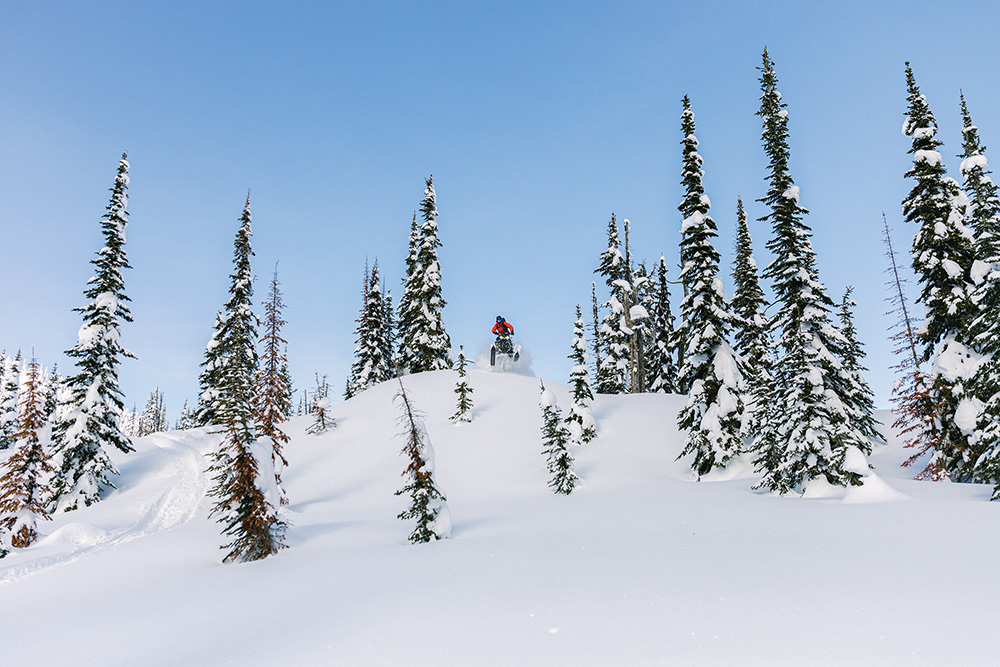
Rick Edwards
Rick is a fit man in his 50s who knows a lot about the backcountry in winter. He worked in Yellowstone Park for many years and spent lots of time on “’biles,” as he calls them, tooling around the park and accessing terrain for backcountry turns. He now occupies his winter free time peering through a camera lens on long tours around Bozeman, Yellowstone Park, and Cooke City.
“I primarily backcountry ski out of Brackett Creek and Bridger Bowl, and also down in Yellowstone,” he says. These areas don’t allow snowmobiles, but I also make annual trips to Cooke City and the Beartooths, where they do. There seems to be enough room and reasonable decorum, even when skier and ‘biler are using the same area. I haven’t noticed any new issues—the areas will continue to become more crowded, but there’s a natural limit to how many people will put the effort into dealing with a ‘bile.”
As for an increase in avalanche danger—a common concern, given the statistics and news reports of snowmobile-triggered slides (and ensuing fatalities) in the last few years—Rick asserts that the worry is not unreasonable, but so far has been largely imaginary. “I’d simply avoid areas where ‘bilers are high-marking,” he says. “I’ve never had a ‘bile pop out above me on a slope. Could it get exciting and terrifying if I’m at the edge of my comfort zone and a ‘bile shows up above me or putting deep tracks in my exit path? Yeah, that’d be rough... but it’s NEVER happened.
Having spent a lot of time around Cooke City, Rick explains that most of the people he sees in the backcountry are using snowmobiles as approach tools. “Normally, where I ski, the people on ‘biles are ski-’bilers—dudes using the ‘bile to haul folks up a slope. Last spring, I skied from the Long Lake gate on the Beartooth Highway to the West Summit of Beartooth Pass. It’s about a three-mile tour with 1,500 feet of vertical gain, and you end up at nearly 11,000 feet. On a clear, blue day, it’s magical. My buddy and I were a half-mile from the summit when a group of four on two ‘biles passed us. They gave us plenty of room and started doing laps on a pretty steep slope. We chatted a bit, then my buddy and I moved on to the summit. In the end, no big deal.”
Has Rick ever had a conflict with another backcountry user of any kind that resulted in a negative experience? He pauses a moment, then says, “None that I recall.”
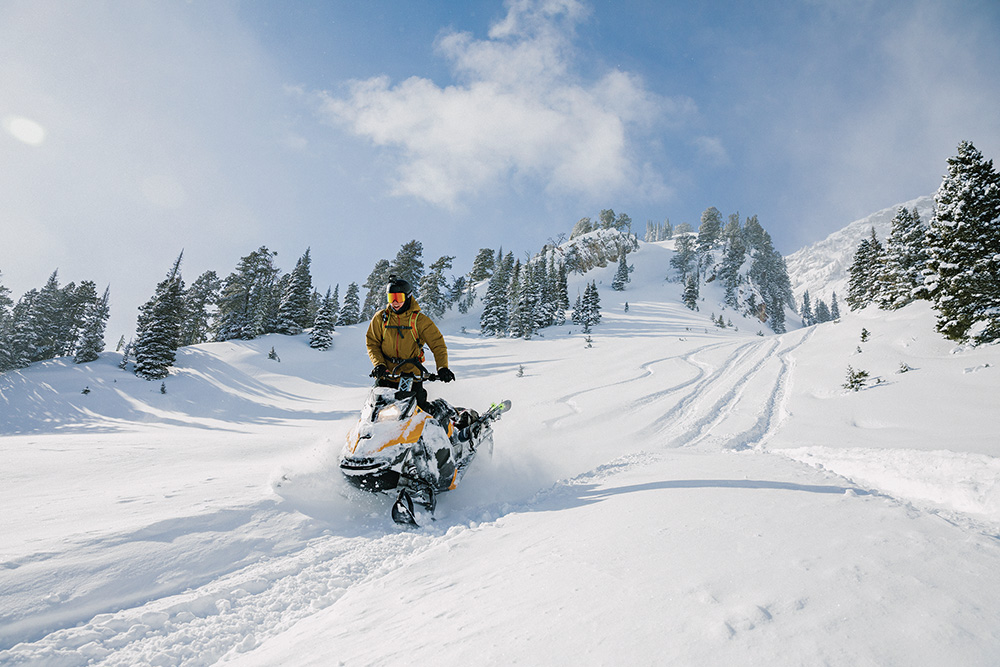
Aaron Yost
Aaron is a lifelong skier from Colorado. He’s a passionate and aggressive skier who seeks out the most challenging lines and technical terrain. He’s not necessarily after trackless powder turns when he heads into the backcountry—steep narrow chutes and cliffs to bomb off of are more his game. He and his family have been passholders at Bridger and Big Sky since his children were in backpacks.
“Internal combustion engines and I have never really gotten along,” Aaron says. “And to be honest, the mosquito-whine of snowmobiles all around me as I skin up Forest Service roads used to make me crazy.”
He goes on: “But then I met a guy. A guy with a machine. On the back of his sled, sitting on the gas can that first time, we could make the Shafthouse trail in under an hour, start skinning, and be making hoot-holler turns in no time at all. That first compromise shaved hours off my touring up Fairly Lake Rd., and saved me miles of lactose-building climbing. Sheesh! We roared to a stop at the base of skiable terrain so fast, I almost forgot to be crabby. It felt like we could go anywhere, and find terrain we’d only dreamed of.”
What about that mosquito-whine? He admits that while he hasn’t become desensitized to it, the benefits of access outweigh the costs to quietude. “With snowmobiles strapped to the trailer behind the truck, I’ve got access. And I’m not about to give that up.”
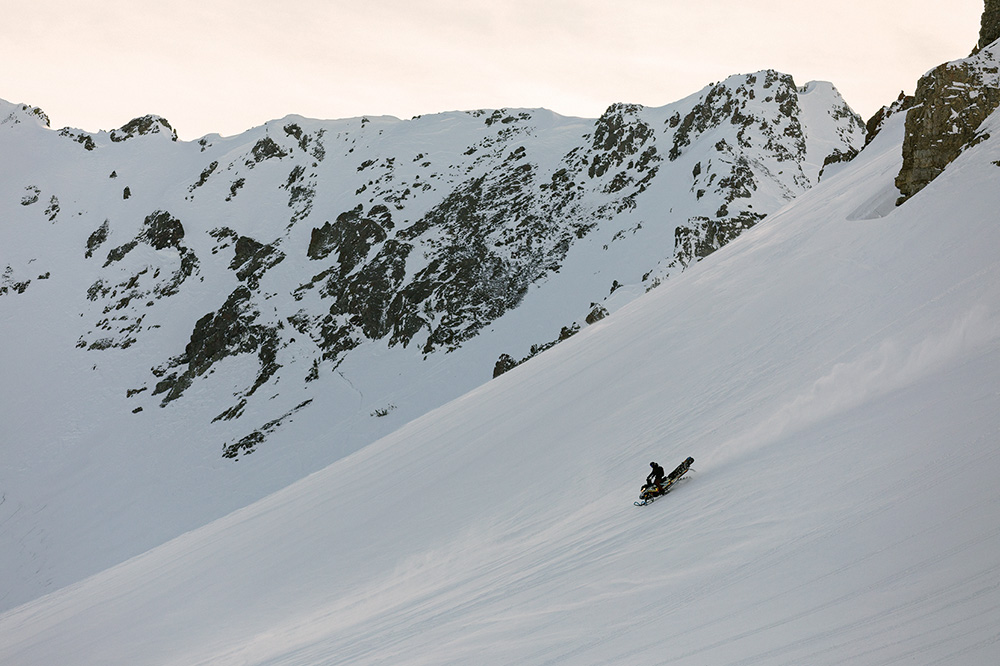
Jeff Flanigan
Owner of Summit Motorsports, Jeff is a lifelong resident of the Gallatin Valley who comes from a family that has been snowmobiling the backcountry around Bozeman for generations. He grew up riding with friends and family, and continues to raise his own family to enjoy snowmobiling.
“For the last decade, the average number of sleds we sell each season really hasn’t changed much, and has never exceeded 120,” Jeff says. “The rental business, however, has grown and continues to do so; largely due to an increase in tourism. It’s not uncommon for newbies to the sport to start by renting.”
The evolution of snowmobile technology impresses Jeff almost as much as the experience of riding them. “Today, the machines that arrive from the factory are clean-burning, quiet, fuel-efficient, and reliable. They are also much easier to ride, and the rider demographic is changing as a result. Sure, there are many skiers nowadays who are buying sleds to access backcountry terrain, but in general more people are getting involved due to how much more approachable the machines are.”
As for crowding and access issues, Jeff hasn’t heard of any conflicts. He encourages people to stay friendly and obey the laws and boundaries. With motorsports in general, he thinks problems usually arise when people fail to follow posted rules.
Jeff would like to see the Forest Service make a more determined effort to keep the trailhead areas plowed and accessible throughout the winter. Snowmobilers all have to purchase a trail pass that helps pay for keeping groomed trails open.
Concerning avalanche danger, Jeff points out that “Like the sleds themselves, avalanche-safety gear has evolved to be much more user-friendly and effective. More people in the backcountry with high-quality rescue gear could be helpful to all users.”
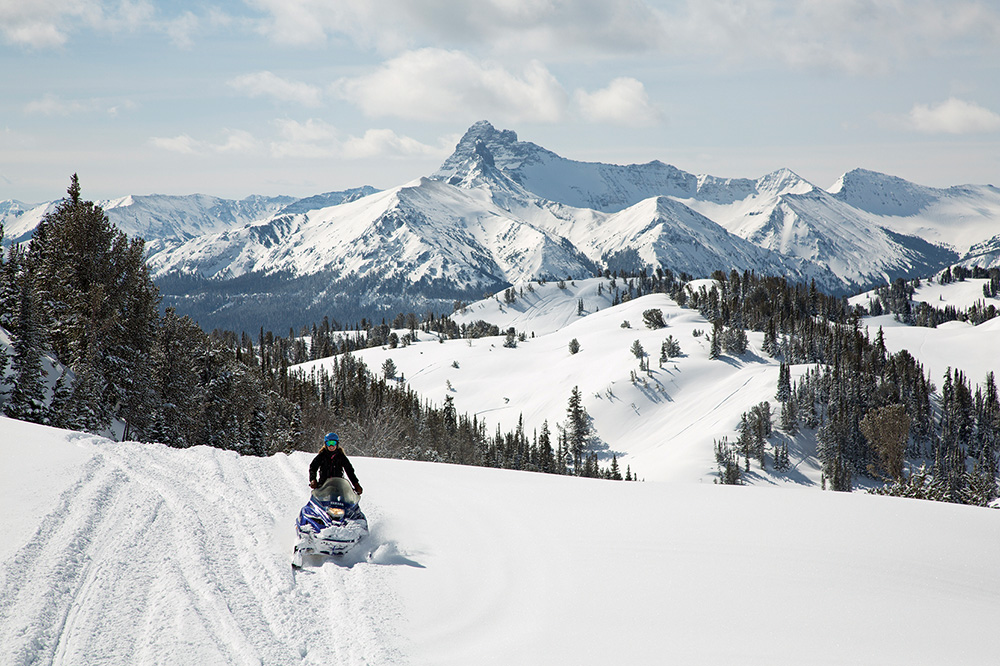
Ian Hoyer
Ian moved to Bozeman ten years ago and has been working for the Gallatin National Forest Avalanche Center for the last three. He says that through just a few seasons with GNFAC, he has witnessed more sleds in the backcountry each year, but that the use is still proportional to the public land available, and that the total numbers of users will be manageable for the foreseeable future.
“The technology available in sleds to access the backcountry has been there since the ’90s, and I haven’t seen a spike in avalanches as a result of today’s machines,” Ian says. “Most riders, regardless of the capabilities of their machines, do not ride in classic avalanche terrain of big slopes; they ride in areas where their greatest danger usually lies in underestimating small terrain traps like gullies and small rollers.”
Which makes education even more important, Ian says. “More snowmobilers are attending GNFAC classes, and consequently the GNFAC is now offering more sled-specific field days. Every Friday night in Cooke City, the GNFAC hosts an avalanche-awareness class, and on Saturdays there’s a beacon-search activity near the Cooke City Warming Hut.”
Ian says that the snowmobile demographic is a “mixed bag,” depending on the trailhead. “If you go to Battle Ridge, you’re going to see sled-skiers heading back to the Throne,” he says. “But go to the Taylor Fork, and the makeup will likely be exclusively sledders.”
As a skier and avalanche educator who uses a sled for both work and play, what’s his perspective? “I enjoy both skiing and snowmobiling,” he says. “I find the relationship between skiers and sledders to be improving, and it’ll likely continue to do so, because it’s hard to begrudge sleds when you’re using one for your own approach.”
Still, to keep things cordial in the backcountry, Ian encourages everyone to be courteous and kind. “If you’re on a sled, slow down when you approach a skier,” he explains. “If you’re a skier, step to the side and allow sledders to pass. All users should follow Forest-Service rules and stay within legal boundaries.”
So, will there be a problem or not? It’s hard to say, and only time will tell. Attitudes vary and everyone’s experience is different. But as with hikers and mountain bikers, the situation is here to stay—which means that attitude is everything. As the number of backcountry users continues to grow—not just backcountry skiers and sledders, but cross-country skiers, ice climbers, and mountaineers—we should keep in mind that everyone out there is just trying to have fun. The quality of our experience is largely affected by how we treat each other. So be nice, be tolerant, and help each other out—that’s good advice no matter what.
High & Tight
Pulling skiers behind sleds is not the ideal or safest way of transport, but let’s face it, we do it anyway—all the time. If there are too many folks to fit on the sled during the approach, the next-best option is to tow. Done right, it can be an effective means of transportation, but there’s a lot to keep in mind for both the tower and the towee. To avoid de-fleshing yourself or your buddy, follow these guidelines for a safe and enjoyable ride.
General Considerations
Towees need to be competent skiers. Being pulled by a sled requires a unique skillset, different than that of downhill skiing. Precise edge control and strong legs are a must.
Rope length should not exceed 40 feet (20-30 is better). When towing multiple people, offset the rope lengths so skiers are in a staggered formation.
Do not put knots or loops at the end of the rope.
Load ski poles on the snowmobile or strap them onto the skier’s backpack.
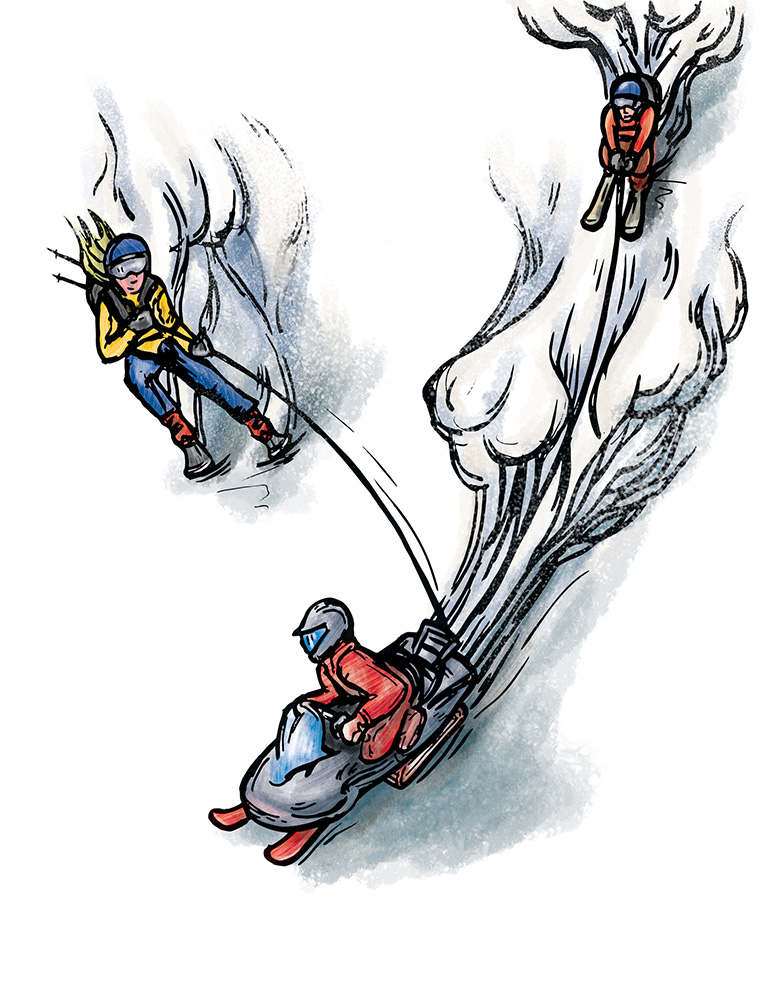
Snowmobile Operator
Attach rope to snowmobile on rear bumper with as little tail possible. A bowline knot works well.
Be smooth on the throttle. Towing people is hard on the sled and can easily burn through belts. (Or shoulder joints.)
Be aware of your surroundings and exercise extreme caution on behalf of the towees. Routinely check back over your shoulder, especially after sharp turns.
If you feel excessive drag, immediately check for problems—a towed skier might be stuck in soft snow or the rope may be wrapped around a tree.
Skier(s) Being Towed
Manage slack. Keep the rope as tight as possible, but be mindful of excess tangling in your skis.
Manage speed on the downhills to avoid slack.
Never wrap the rope around your hand or waist.
Don’t be afraid to let go if things get sketchy. Unless your friend is a raging dickhead, he’ll come back for you. —the editors

